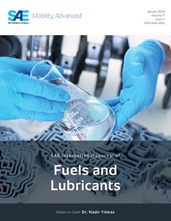A predictive model for estimating the fuel saving of “top tier” engine, axle and transmission lubricants (compared to “mainstream” lubricants), in a heavy duty truck, operating on a realistic driving cycle, is described. Simulations have been performed for different truck weights (10, 20 and 40 tonnes) and it was found that the model predicts percentage fuel economy benefits that are of a similar magnitude to those measured in well controlled field trials1.
The model predicts the percentage fuel saving from the engine oil should decrease as the vehicle load increases (which is in agreement with field trial results). The percentage fuel saving from the axle and gearbox oils initially decreases with load and then stays more or less constant. This behaviour is due to the detailed way in which axle and gearbox efficiency varies with speed/load and lubricant type. A customer that uses fuel economy engine, axle and gearbox lubricants will achieve higher fuel savings compared to a customer that just uses a fuel economy engine oil.
Predicted fuel savings amount to just over 0.6 kg/hour for a 40 tonne truck. This estimate is for an SAE 5W-30 synthetic engine oil (compared to a mineral based SAE 15W-40), a synthetic SAE 75-80 gearbox oil (compared to a mineral SAE 80W gearbox oil) and a synthetic SAE 75W-90 axle oil (compared to a mineral SAE 90). This equates to a percentage fuel consumption saving of approximately 2.3%. Larger savings are predicted if lower viscosity engine lubricants were to be used (and example calculations have been performed for an SAE 0W-20 engine oil).
